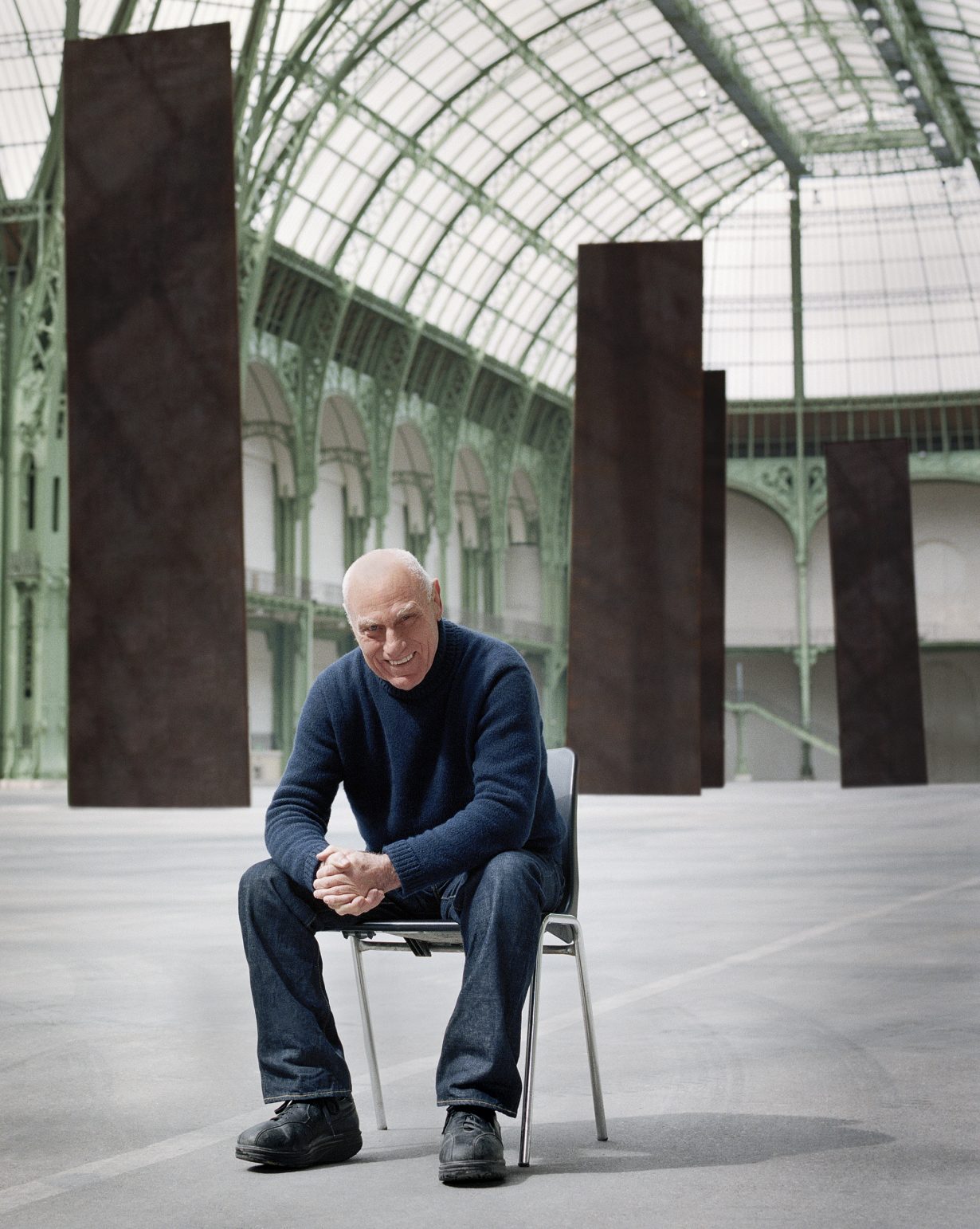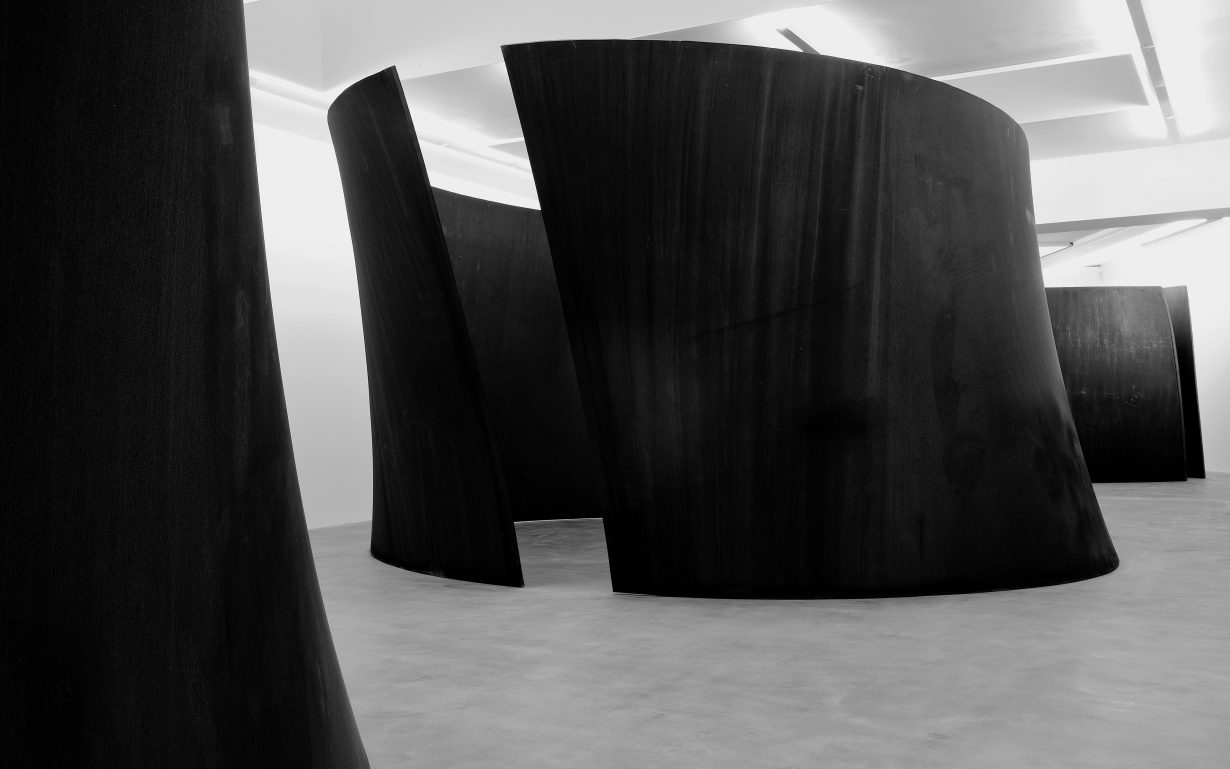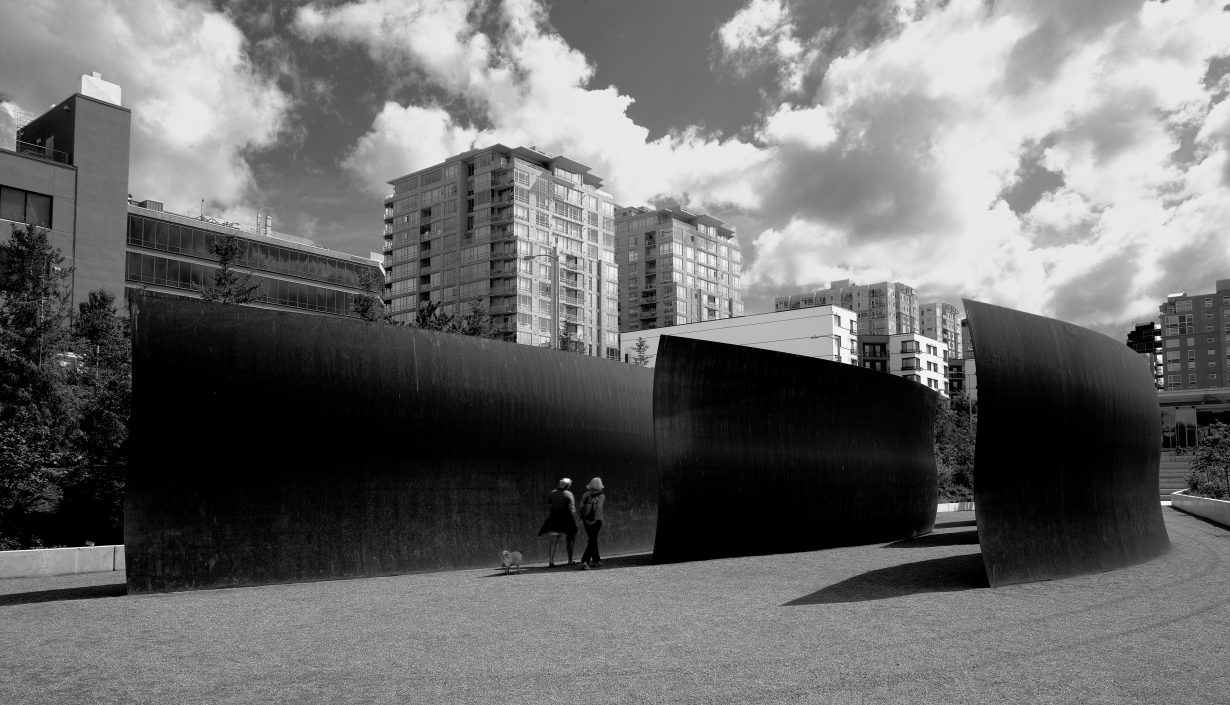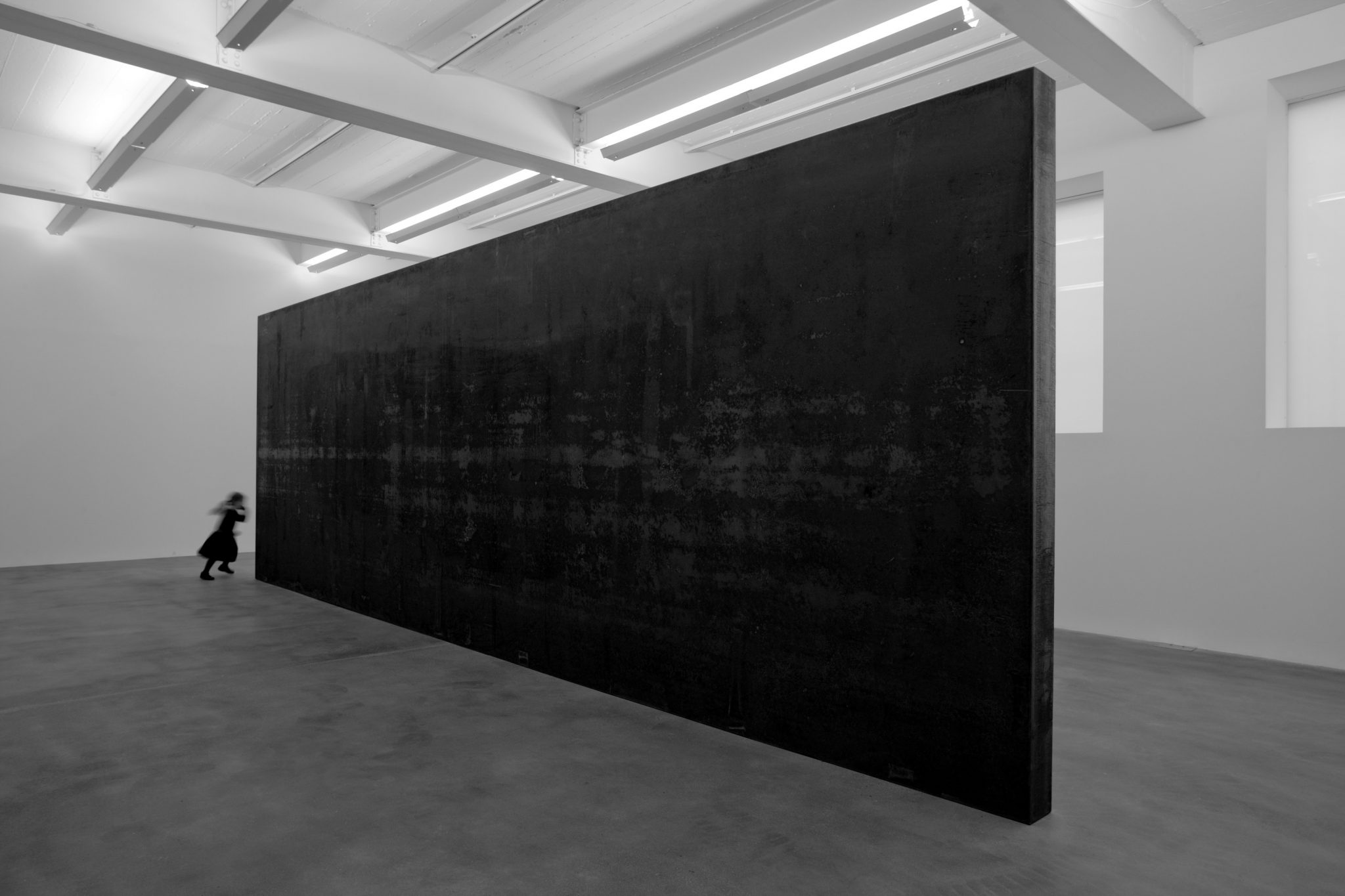As force and action, Serra treated sculpture as more verb than noun
Richard Serra’s death, at the age of 85, not only brings to closure his ‘life-time involvement’ in sculpture but also signals the end of a stellar generation of North American artists – Eva Hesse, Robert Smithson, Nancy Holt – whose work was distinctly and determinedly post-minimalist. Each of them, in their own way, comprehended the minimalist practices of Donald Judd and Robert Morris as constituting a significant break within the framework of late-modernist American art and criticism. As such, minimalism was viewed by many artists emerging in the late 1960s as a practice to be reckoned with, but also one that needed to be superseded.
Serra differed from his immediate contemporaries insofar as sculpture remained a decisive category for him; there was ultimately no question of moving into budding mediums such as land art, as tempted as one might be to place a work such as Shift (1970–72) precisely under that rubric insofar as it consists of six concrete walls that paralleled the undulating landscape it is built into. His move into sculptural practice was initially circuitous. At Yale, he studied painting under the Bauhaus luminary Josef Albers and painting’s logic inflected Serra’s early sculptural practice: photographs of Richard Serra in 1969 flinging molten lead from a ladle, for example, echo Hans Namuth’s famous 1950 photographs of Jackson Pollock rhythmically dripping paint onto a floor-laid canvas. And those photos of Serra, alongside the Casting works (1969) that resulted from the process documented, evidence the complex reception and displacement of Pollock’s legacy and Harold Rosenberg’s notion of ‘Action Painting’ that was widespread in the late 1960s. Indeed, statements from Hesse as well as Morris’s 1968 essay ‘Anti-Form’ likewise point to how Pollock’s dripped and poured canvases were setting conditions for artists beyond painting.

Painting’s residual presence within his sculpture, however, became a condition that Serra had to acknowledge and then halt in its tracks if a fully sculptural practice was to be achieved, that ‘life-time involvement’ he spoke of in an interview with Liza Bear in 1976. Four years later, responding to questions from Bernard Lamarche-Vadel, Serra explained: ‘The work I make does not allow for experience outside the conventions of sculpture as sculpture.’ Casting remained too close to painting or the pictorial for Serra. Minimalism maintained a similarly difficult relation to painting, as if Clement Greenberg’s invocation of medium specificity vis-à-vis modernist painting was transformed into Judd’s specific object, which was, as Judd commented, ‘nearer to painting’ than to sculpture.
Once the vestiges of painting’s conventions were recognized, its procedures could be eschewed and a properly sculptural practice could be developed, one in which gravity weighs upon sculpture with the force of necessity. One Ton Prop (House of Cards) – four sheets of lead, each weighing 500 pounds, that lean against and support one another – exemplified this gravitational pull as part and parcel of sculpture while also deconstructing the minimalist cube, disclosing less its irrationality (as per Hesse) than its dependency upon invisible forces and processes that hold the sheets of lead in equilibrium. As force and action, Serra treated sculpture as more verb than noun.


From all this, Serra forged an intrinsically sculptural practice, one in which his sculptures would obey no other conventions than those internal to it. From 1969 onwards Serra’s work developed at breakneck pace. The Skullcracker works (1969) revealed how stacking, compacting, balancing and propping became hallmarks of his sculptural vocabulary that intersected with steel manufacture (indeed, Serra’s earlier years labouring as a steelworker left a considerable imprint on his practice). With the development of that vocabulary also emerged a conviction of sculpture as integrally linked with its surroundings. Minimalism held a similar conviction; but in minimalism those surroundings – the gallery space, principally – were largely external factors that the artwork could promote consciousness of. In Serra’s mind the task was to gather those ‘external factors’ into the sculpture, rendering them part of the work’s necessity.

Serra, however, had not rejected all aspects of minimalist doctrine. Like Morris (a little older than Serra) and James Turrell (a little younger and perhaps Serra’s polar opposite), the phenomenology of the French philosopher Maurice Merleau-Ponty was crucial, especially his claim that perception was corporeally determined. Yet again, however, the differences are crucial: minimalism never gave deep consideration to the physicality of the beholder – the body was always conceived in the abstract – while Serra construed the human body as possessed of mass. In this way, Serra conjoined different frameworks into a network of his sculptural labour – a phenomenology of embodiment intertwined with a phenomenology of materials.

Serra’s career remains marked by the controversy surrounding Tilted Arc (1981). Since its dismantling by the authorities in 1989 following a lengthy court battle, Tilted Arc has become the defining instance of site specificity, the example given of this category in seminar rooms and art history lectures across the West. But in mentioning this work it is also worth noting its difficulty. Too frequently site specificity is envisaged as artworks made and almost tidily housed in a particular spatial context, akin to how a hand may perfectly fit a tailor-made glove. Tilted Arc was more obdurate and antagonistic than that; it worked to barricade, divide and unsettle an urban space that was ostensibly ‘public’. The trial unintentionally had the consequence of highlighting the intersubjective difficulties site-specific artworks might expose and bear witness to.
That partly explains how his sculptural practice since the early 1980s onwards has avoided lapsing into mere spectacle, even as the works grew in size and scale, enveloping or conscripting their surroundings. They deliberately proffer too little respite, refuse the awe-inspired experience common to grandstanding mammoth artworks apparently deploying phenomenological motifs – a depressingly ubiquitous feature of the spectacular public art of recent years. Throughout Serra’s ‘life-long commitment’, the idea that embodiment and sculpture are messy was ever-present. In art and mortality, obduracy meets fragility as forces existing in a peculiar state of temporary equilibrium.
Matthew Bowman is an art critic and Lecturer in Arts at the University of Suffolk
